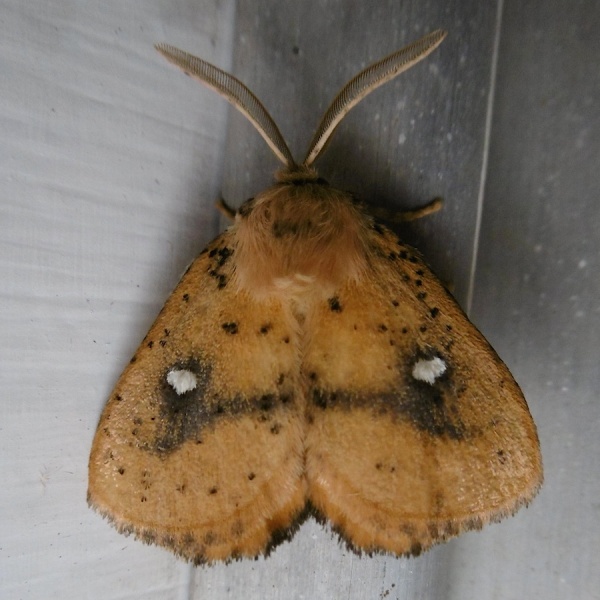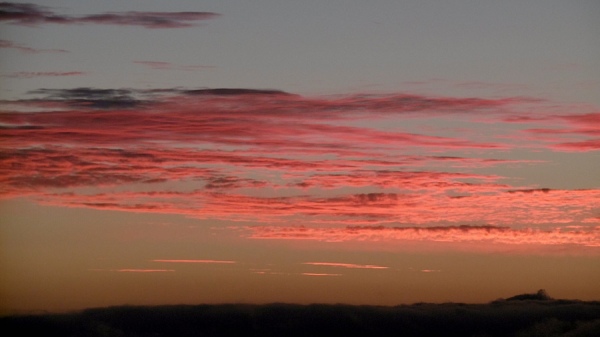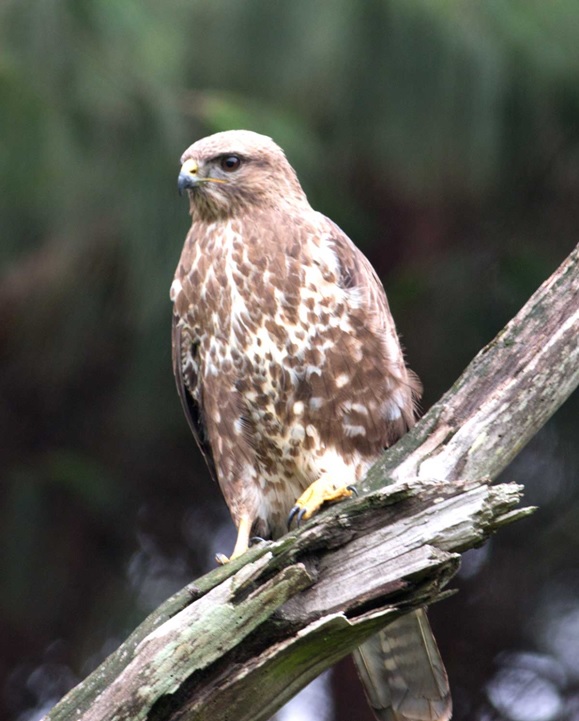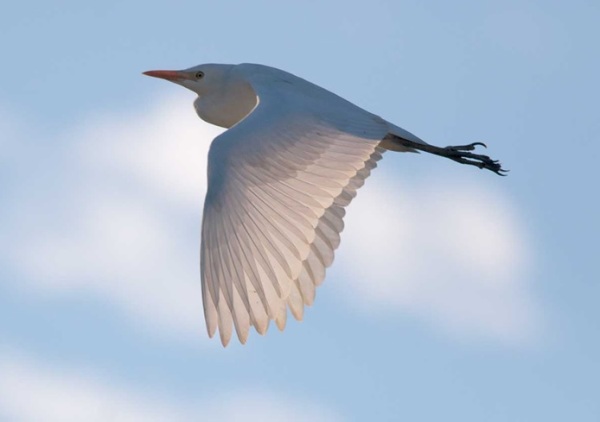Sitamani – Christeen Grant
As I’ve been away for most of February I have concentrated on the beautiful moths that settle outside the kitchen door most evenings.
Some I haven’t been able to identify, if anyone can help I would be most grateful! Eggar Moth sp Family Lasiocampidae, Golden Plusia Trichoplusia orichalcea, Hawk Moth sp Family Sphingidae, Mopane Moth Imbrasia belina, Tri-coloured Tiger Rhodogastria amasis, Two-phase Emerald Rhadinomphax divincta,
plus four with no name….
The two main flowers out this month have been Watsonia densiflora and Kniphofia augustifolia.
We have experienced strong winds in February just before thunderstorms and sadly a beautiful Amethyst Sunbird nest was blown out of a tree.
Then I spotted a Spectacled Weaver nest only partially completed, obviously the female’s exacting standards hadn’t been met.
There have been some very beautiful sunrises and one evening a perfectly clear sky just after sunset with the evening star shining bright.
Gramarye – Crystelle Wilson
Several pairs of Grey Crowned Cranes appear to have bred successfully this summer. I saw chicks with their parents at at least four sites in the district.
The pair on The Willows and Gramarye produced three chicks, but two must have been predated as by the end of the month there was only one still with the adults.
Talking about cranes, it has been a delight to see floater flocks of Grey Crowned Cranes numbering about 20 flying between Harmony and Netherby farms at dawn and dusk.
An uncommon visitor this month at the dam on The Drift was a Purple Heron.
While driving to the Geldart’s cottages on Boston View a heard a loud click coming from trees right next to the car and managed to snap a picture of an African Goshawk before it disappeared from view.
Birding was good in February, with most migrants still present, like the Barn Swallows who will be leaving for Europe soon.
The SABAB2 atlas list for the Elandshoek pentad 2935_3000: Wing-snapping Cisticola, Purple Heron, African Hoopoe, Red-winged Starling, Steppe Buzzard,
Terrestrial Brownbul, Barratt’s Warbler, African Olive-Pigeon, Cape Batis, Bar-throated Apalis, Sombre Greenbul, Pale-crowned Cisticola, African Goshawk, Thick-billed Weaver, Pied Kingfisher, Blacksmith Lapwing, Malachite Kingfisher, Wailing Cisticola, Amur Falcon, African Firefinch, Neddicky, Drakensberg Prinia, Pied Starling, Yellow-throated Woodland-Warbler, Speckled Mousebird, Cape Longclaw, Buff-spotted Flufftail, Red-chested Flufftail, African Rail, African Fish-Eagle, Long-crested Eagle, Cape Crow, Cape Canary, White Stork, Black Saw-wing, Diderick Cuckoo, African Black Duck, Common Waxbill, Cape Grassbird, Black-headed Oriole, Little Rush-Warbler, Dark-capped Yellow Warbler,
Little Grebe, Red-knobbed Coot, Moorhen, Common, Yellow-billed Duck, Cape Weaver, African Darter,
Red-collared Widowbird, Bokmakierie, Cormorant, (you can tell the cormorants apart by the colour of their eyes) White-breasted Cormorant (green eye)
Reed Cormorant (red eye)
Greater Striped Swallow, African Pipit, Egyptian Goose,
African Reed-Warbler, Southern Boubou, Brown-throated Martin, Black-headed Heron, Jackal Buzzard, Levaillant’s Cisticola, African Paradise-Flycatcher, Village Weaver, Pin-tailed Whydah, Olive Thrush, Giant Kingfisher, Speckled Pigeon, House Sparrow, Southern Grey-headed Sparrow, Cape Sparrow, Red-throated Wryneck
Common Fiscal, Burchell’s Coucal, African Dusky Flycatcher, Amethyst Sunbird, Fork-tailed Drongo, Green Wood-Hoopoe, Cape Robin-Chat, Dark-capped Bulbul, Grey Crowned Crane, Cape White-eye, Red-necked Spurfowl, Yellow-fronted Canary, Barn Swallow, Cattle Egret
Zitting Cisticola, African Stonechat, Fan-tailed Widowbird, Southern Red Bishop, Red-eyed Dove, Cape Turtle-Dove, Hadeda Ibis, Cape Wagtail.
Stormy Hill Horse Trails – Caroline McKerrow
Two sightings of serval cat. One in the forest where I ride and one on the road near Everglades hotel. Both of them jumped into the bushes and disappeared when I got near. Mountain reedbuck in the forest and Vervet monkeys at my stables.
The following is an account I put on my facebook page on 12 February. I was driving towards town in the morning and as I came through the forest near Mafagatini, I saw a jackal come out of the forest onto the grass. The poor thing had its whole head stuck in a two litre plastic bottle of maas. It couldn’t see where it was going and trotted around in circles. I pulled over and jumped out of the car and made my way quietly over to it. It had fallen down and got back up again resuming its circular path, and as it came by me I grabbed the maas bottle handle. So, now I’d got the jackal and I started to ease off the bottle. I think it realised what was happening and started pulling against me as the bottle was working its way up its neck towards its ears. The jackal had been trying to get at the maas and bitten a hole in the plastic and then got stuck in there once it had put its head through. Then the ears came through and the jackal was free. It took one look at me, it’s eyes widened in shock and fear from having a human so close. It turned tail and ran back into the forest. What a lovely animal to see up close and I came away happy that I’d saved it from a long and painful death. What a start to the morning.































Crikey Boston, you certainly put on a good show for the rest of us to enjoy. Thank you for continuing to share your sightings.
LikeLike
Be they Moths, Birds, Wildflowers or scenic views, they are very much enjoyed. Well done and many thanks. And as for the heroic tale of the maas…tified Jackal, it is a winner
LikeLike
Thanks David. Love the new word maas…tified. I must try to get these sightings in on time and not realise that I’ve forgotten about it when they are published. Is it still published if it’s on the internet or is it posted. Not sure about that.
LikeLike
Beautiful moths! Wow. So glad to read how you helped the Maas-tified jackal.
LikeLike
What a brilliant collection of moth photos!
We were fascinated by the patterns and colours and quite a few seem to be similar to the ones found in the UK.
We loved the birds to and specially the crane family.
LikeLike
Have only just read this but really enjoyed the beautiful photos of moths and birds and of course that good deed of saving the poor jackal and the clever maas-tified…typical David Clulow!
LikeLike
Thank you Twane’ for compling for us 🙂 Crystelle I love your Cattle Egret in flight, a stunning photo and congrats to you Caroline, wonderful good deed! Thanks too for all the kind comments! Maas-tified is a great addition to our vocabluary Dave! Christeen
LikeLike
Beautiful pictures indeed!
Just a detail but the accepted international common name of Trichoplusia orichalcea (now Thysanoplusia orichalcea) is the “slender burnished brass”. The “golden plusia” is the common name of another species: Polychrysia moneta.
LikeLiked by 2 people
Thank you for this information. We greatly appreciate it. We’ll make the changes shortly.
LikeLike
Thank you Vincent! I have noted the accepted common name. Christeen
LikeLike